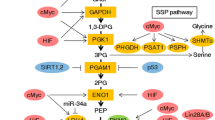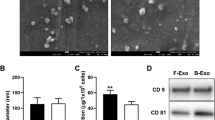Abstract
High mobility group box-1 (HMGB1) participates actively in oxidative stress damage, and the latter relates closely to diabetes and diabetic complications including osteoporosis, though the underlying mechanisms are elusive. This study aimed to investigate the effect of high glucose on bone marrow stromal cells (BMSCs) apoptosis and the role of HMGB1 in this process. BMSCs were isolated from 2-week-old Sprague-Dawley rats and cultured in medium containing normal glucose (NG), high glucose (HG), high glucose + glycyrrhizin (HMGB1 inhibitor, HG+GL), and high glucose + glycyrrhizin + dorsomorphin (AMPK inhibitor, HG+GL+Dm), respectively. Cell apoptosis, expression of HMGB1, AMPK, apoptotic markers, and mitochondrial functions were detected. By these approaches, we demonstrated that HG treatment significantly upregulated the expression of HMGB1 in BMSCs, which could be attenuated by GL treatment. Inhibiting HMGB1 by GL improved AMPK activation, decreased mitochondrial ROS levels, increased mitochondrial membrane potential, normalized mitochondrial fission/fusion balance, and consequently reduced apoptosis of BMSCs under HG condition. The addition of AMPK inhibitor dorsomorphin hampered this protective effect. Taken together, our data show that inhibition of HMGB1 can be an effective approach to alleviate HG-induced BMSCs apoptosis by activation of AMPK pathway and relieving mitochondrial dysfunction.




Similar content being viewed by others
References
Andersson U, Antoine DJ, Tracey KJ (2014) The functions of HMGB1 depend on molecular localization and post-translational modifications. J Intern Med 276:420–424. https://doi.org/10.1111/joim.12309
Antoine DJ, Harris HE, Andersson U, Tracey KJ, Bianchi ME (2014) A systematic nomenclature for the redox states of high mobility group box (HMGB) proteins. Mol Med 20:135–137. https://doi.org/10.2119/molmed.2014.00022
Chan DC (2006) Mitochondrial fusion and fission in mammals. Annu Rev Cell Dev Biol 22:79–99. https://doi.org/10.1146/annurev.cellbio.22.010305.104638
Charoonpatrapong K, Shah R, Robling AG, Alvarez M, Clapp DW, Chen S, Kopp RP, Pavalko FM, Yu J, Bidwell JP (2006) HMGB1 expression and release by bone cells. J Cell Physiol 207:480–490. https://doi.org/10.1002/jcp.20577
Choi EM, Lee YS (2011) Mitochondrial defects and cytotoxicity by antimycin A on cultured osteoblastic MC3T3-E1 cells. Food and chemical toxicology : an international journal published for the British Industrial Biological Research Association 49:2459–2463. https://doi.org/10.1016/j.fct.2011.04.037
Colombo SL, Moncada S (2009) AMPKalpha1 regulates the antioxidant status of vascular endothelial cells. Biochem J 421:163–169. https://doi.org/10.1042/BJ20090613
Dai P, Mao Y, Sun X, Li X, Muhammad I, Gu W, Zhang D, Zhou Y, Ni Z, Ma J, Huang S (2017) Attenuation of Oxidative Stress-Induced Osteoblast Apoptosis by Curcumin is Associated with Preservation of Mitochondrial Functions and Increased Akt-GSK3beta Signaling. Cell Physiol Biochem 41:661–677. https://doi.org/10.1159/000457945
Dong WW, Liu YJ, Lv Z, Mao YF, Wang YW, Zhu XY, Jiang L (2015) Lung endothelial barrier protection by resveratrol involves inhibition of HMGB1 release and HMGB1-induced mitochondrial oxidative damage via an Nrf2-dependent mechanism. Free Radic Biol Med 88:404–416. https://doi.org/10.1016/j.freeradbiomed.2015.05.004
Gan X, Huang S, Yu Q, Yu H, Yan SS (2015) Blockade of Drp1 rescues oxidative stress-induced osteoblast dysfunction. Biochem Biophys Res Commun 468:719–725. https://doi.org/10.1016/j.bbrc.2015.11.022
Hofbauer LC, Lecka-Czernik B, Seibel MJ (2016) Sweet and brittle - diabetes mellitus and the skeleton. Bone 82:1. https://doi.org/10.1016/j.bone.2015.09.001
Huang CY, Chiang SF, Chen WT, Ke TW, Chen TW, You YS, Lin CY, Chao KSC, Huang CY (2018) HMGB1 promotes ERK-mediated mitochondrial Drp1 phosphorylation for chemoresistance through RAGE in colorectal cancer. Cell Death Dis 9:1004. https://doi.org/10.1038/s41419-018-1019-6
Kanazawa I, Takeno A, Tanaka KI, Notsu M, Sugimoto T (2018) Osteoblast AMP-activated protein kinase regulates glucose metabolism and bone mass in adult mice. Biochem Biophys Res Commun 503:1955–1961. https://doi.org/10.1016/j.bbrc.2018.07.141
Kang R, Chen R, Zhang Q, Hou W, Wu S, Cao L, Huang J, Yu Y, Fan XG, Yan Z, Sun X, Wang H, Wang Q, Tsung A, Billiar TR, Zeh HJ III, Lotze MT, Tang D (2014) HMGB1 in health and disease. Mol Aspects Med 40:1–116. https://doi.org/10.1016/j.mam.2014.05.001
Krysko DV, Agostinis P, Krysko O, Garg AD, Bachert C, Lambrecht BN, Vandenabeele P (2011) Emerging role of damage-associated molecular patterns derived from mitochondria in inflammation. Trends in immunology 32:157–164. https://doi.org/10.1016/j.it.2011.01.005
Li XN, Song J, Zhang L, LeMaire SA, Hou X, Zhang C, Coselli JS, Chen L, Wang XL, Zhang Y, Shen YH (2009) Activation of the AMPK-FOXO3 pathway reduces fatty acid-induced increase in intracellular reactive oxygen species by upregulating thioredoxin. Diabetes 58:2246–2257. https://doi.org/10.2337/db08-1512
Li X, Zhang Y, Qi G (2013) Evaluation of isolation methods and culture conditions for rat bone marrow mesenchymal stem cells. Cytotechnology 65:323–334. https://doi.org/10.1007/s10616-012-9497-3
Liu B, Gan X, Zhao Y, Chen J, Yu H, Gao J, Yu H (2019) TEGDMA releasing in resin composites with different filler contents and its correlation with mitochondrial mediated cytotoxicity in human gingival fibroblasts. J Biomed Mater Res A 107:1132–1142. https://doi.org/10.1002/jbm.a.36600
Liu B, Gan X, Zhao Y, Yu H, Gao J, Yu H (2019) Inhibition of HMGB1 promotes osseointegration under hyperglycemic condition through improvement of BMSC dysfunction. Oxid Med Cell Longev 2019:1703709–1703714. https://doi.org/10.1155/2019/1703709
Lotze MT, Tracey KJ (2005) High-mobility group box 1 protein (HMGB1): nuclear weapon in the immune arsenal. Nat Rev Immunol 5:331–342. https://doi.org/10.1038/nri1594
Mao YX, Cai WJ, Sun XY, Dai PP, Li XM, Wang Q, Huang XL, He B, Wang PP, Wu G, Ma JF, Huang SB (2018) RAGE-dependent mitochondria pathway: a novel target of silibinin against apoptosis of osteoblastic cells induced by advanced glycation end products. Cell Death Dis 9:674. https://doi.org/10.1038/s41419-018-0718-3
Mohammad G, Alam K, Nawaz MI, Siddiquei MM, Mousa A, Abu El-Asrar AM (2015) Mutual enhancement between high-mobility group box-1 and NADPH oxidase-derived reactive oxygen species mediates diabetes-induced upregulation of retinal apoptotic markers. J Physiol Biochem 71:359–372. https://doi.org/10.1007/s13105-015-0416-x
Mollica L, De Marchis F, Spitaleri A, Dallacosta C, Pennacchini D, Zamai M, Agresti A, Trisciuoglio L, Musco G, Bianchi ME (2007) Glycyrrhizin binds to high-mobility group box 1 protein and inhibits its cytokine activities. Chem Biol 14:431–441. https://doi.org/10.1016/j.chembiol.2007.03.007
Murphy E, Ardehali H, Balaban RS, DiLisa F, Dorn GW 2nd, Kitsis RN, Otsu K, Ping P, Rizzuto R, Sack MN, Wallace D, Youle RJ, American Heart Association Council on Basic Cardiovascular Sciences CoCC, Council on Functional G, Translational B (2016) Mitochondrial Function, Biology, and Role in Disease: A Scientific Statement From the American Heart Association. Circ Res 118:1960–1991. https://doi.org/10.1161/RES.0000000000000104
Nasrallah CM, Horvath TL (2014) Mitochondrial dynamics in the central regulation of metabolism. Nat Rev Endocrinol 10:650–658. https://doi.org/10.1038/nrendo.2014.160
Nin JW, Ferreira I, Schalkwijk CG, Jorsal A, Prins MH, Parving HH, Tarnow L, Rossing P, Stehouwer CD (2012) Higher plasma high-mobility group box 1 levels are associated with incident cardiovascular disease and all-cause mortality in type 1 diabetes: a 12 year follow-up study. Diabetologia 55:2489–2493. https://doi.org/10.1007/s00125-012-2622-1
Okuma Y, Liu K, Wake H, Liu R, Nishimura Y, Hui Z, Teshigawara K, Haruma J, Yamamoto Y, Yamamoto H, Date I, Takahashi HK, Mori S, Nishibori M (2014) Glycyrrhizin inhibits traumatic brain injury by reducing HMGB1-RAGE interaction. Neuropharmacology 85:18–26. https://doi.org/10.1016/j.neuropharm.2014.05.007
Sun X, Mao Y, Dai P, Li X, Gu W, Wang H, Wu G, Ma J, Huang S (2017) Mitochondrial dysfunction is involved in the aggravation of periodontitis by diabetes. J Clin Periodontol 44:463–471. https://doi.org/10.1111/jcpe.12711
Takeno A, Kanazawa I, Tanaka K, Notsu M, Yokomoto M, Yamaguchi T, Sugimoto T (2015) Activation of AMP-activated protein kinase protects against homocysteine-induced apoptosis of osteocytic MLO-Y4 cells by regulating the expressions of NADPH oxidase 1 (Nox1) and Nox2. Bone 77:135–141. https://doi.org/10.1016/j.bone.2015.04.025
Tan MY, Zhang CD, Xia B, Guo J, Fan ZW, Wu TH, Wang S, Liu SF, Deng L, Guo X, Huang YC (2016) The Expression of HMGB1 in Bone Marrow MSCs Is Upregulated by Hypoxia with Regulatory Effects on the Apoptosis and Adhesion. Biomed Res Int 2016:4598927–4598928. https://doi.org/10.1155/2016/4598927
Tang D, Kang R, Livesey KM, Kroemer G, Billiar TR, Van Houten B, Zeh HJ 3rd, Lotze MT (2011) High-mobility group box 1 is essential for mitochondrial quality control. Cell Metab 13:701–711. https://doi.org/10.1016/j.cmet.2011.04.008
Tang Y, Zhao X, Antoine D, Xiao X, Wang H, Andersson U, Billiar TR, Tracey KJ, Lu B (2016) Regulation of Posttranslational Modifications of HMGB1 During Immune Responses. Antioxid Redox Signal 24:620–634. https://doi.org/10.1089/ars.2015.6409
Toyama EQ, Herzig S, Courchet J, Lewis TL Jr, Loson OC, Hellberg K, Young NP, Chen H, Polleux F, Chan DC, Shaw RJ (2016) Metabolism. AMP-activated protein kinase mediates mitochondrial fission in response to energy stress. Science 351:275–281. https://doi.org/10.1126/science.aab4138
Viollet B, Horman S, Leclerc J, Lantier L, Foretz M, Billaud M, Giri S, Andreelli F (2010) AMPK inhibition in health and disease. Crit Rev Biochem Mol Biol 45:276–295. https://doi.org/10.3109/10409238.2010.488215
Wang H, Qu H, Deng H (2015) Plasma HMGB-1 Levels in Subjects with Obesity and Type 2 Diabetes: A Cross-Sectional Study in China. PLoS One 10:e0136564. https://doi.org/10.1371/journal.pone.0136564
Wang YG, Qu XH, Yang Y, Han XG, Wang L, Qiao H, Fan QM, Tang TT, Dai KR (2016) AMPK promotes osteogenesis and inhibits adipogenesis through AMPK-Gfi1-OPN axis. Cell Signal 28:1270–1282. https://doi.org/10.1016/j.cellsig.2016.06.004
Willems PH, Rossignol R, Dieteren CE, Murphy MP, Koopman WJ (2015) Redox Homeostasis and Mitochondrial Dynamics. Cell Metab 22:207–218. https://doi.org/10.1016/j.cmet.2015.06.006
Wu SB, Wu YT, Wu TP, Wei YH (2014) Role of AMPK-mediated adaptive responses in human cells with mitochondrial dysfunction to oxidative stress. Biochim Biophys Acta 1840:1331–1344. https://doi.org/10.1016/j.bbagen.2013.10.034
Yang YH, Li B, Zheng XF, Chen JW, Chen K, Jiang SD, Jiang LS (2014) Oxidative damage to osteoblasts can be alleviated by early autophagy through the endoplasmic reticulum stress pathway--implications for the treatment of osteoporosis. Free Radic Biol Med 77:10–20. https://doi.org/10.1016/j.freeradbiomed.2014.08.028
Yang H, Wang H, Ju Z, Ragab AA, Lundback P, Long W, Valdes-Ferrer SI, He M, Pribis JP, Li J, Lu B, Gero D, Szabo C, Antoine DJ, Harris HE, Golenbock DT, Meng J, Roth J, Chavan SS, Andersson U, Billiar TR, Tracey KJ, Al-Abed Y (2015) MD-2 is required for disulfide HMGB1-dependent TLR4 signaling. J Exp Med 212:5–14. https://doi.org/10.1084/jem.20141318
Zorov DB, Juhaszova M, Sollott SJ (2014) Mitochondrial reactive oxygen species (ROS) and ROS-induced ROS release. Physiol Rev 94:909–950. https://doi.org/10.1152/physrev.00026.2013
Availability of data and material
The data used to support the findings of this study are available from the corresponding author upon request.
Funding
This work was supported by the National Key Research and Development Program of China (grant No. 2016YFC1102704), the National Natural Science Foundation of China (grant No. 81771113 and No. 81870802) and the Research Fund for Resin Material of Chinese Stomatology Association CSA-R2018-05(G. XQ).
Author information
Authors and Affiliations
Contributions
All authors contributed to the study conception and design. Experimental funding acquisition, study guidance and supervision were performed by Haiyang Yu and Xueqi Gan. Material preparation, data collection and analysis were performed by Beilei Liu, Yuwei Zhao, and Jing Gao. The first draft of the manuscript was written by Beilei Liu and Xueqi Gan. All authors commented on previous versions of the manuscript and approved the final manuscript.
Corresponding author
Ethics declarations
Ethical approval
This study was approved by the Research Ethics Commit of West China Hospital of Stomatology (Approval No. WCHSIRB-D-2017-110).
Consent to participate/publish
Not applicable.
Conflict of interest
The authors declare no competing interests.
Additional information
Publisher’s note
Springer Nature remains neutral with regard to jurisdictional claims in published maps and institutional affiliations.
Key Points
• High glucose induces HMGB1 upregulation and cell apoptosis in BMSCs.
• High glucose causes mitochondrial dysfunction and mitochondrial fragmentation.
• Inhibiting HMGB1 promotes AMPK activation and reduced apoptosis.
• Inhibiting HMGB1 relieves mitochondrial dysfunction and mitochondrial fragmentation through AMPK activation.
Supplementary Information
Supplementary Table 1
(DOCX 13 kb)
Supplementary Figure 1
(DOCX 193 kb)
Rights and permissions
About this article
Cite this article
Liu, B., Gan, X., Zhao, Y. et al. Inhibition of HMGB1 reduced high glucose-induced BMSCs apoptosis via activation of AMPK and regulation of mitochondrial functions. J Physiol Biochem 77, 227–235 (2021). https://doi.org/10.1007/s13105-021-00784-2
Received:
Accepted:
Published:
Issue Date:
DOI: https://doi.org/10.1007/s13105-021-00784-2




